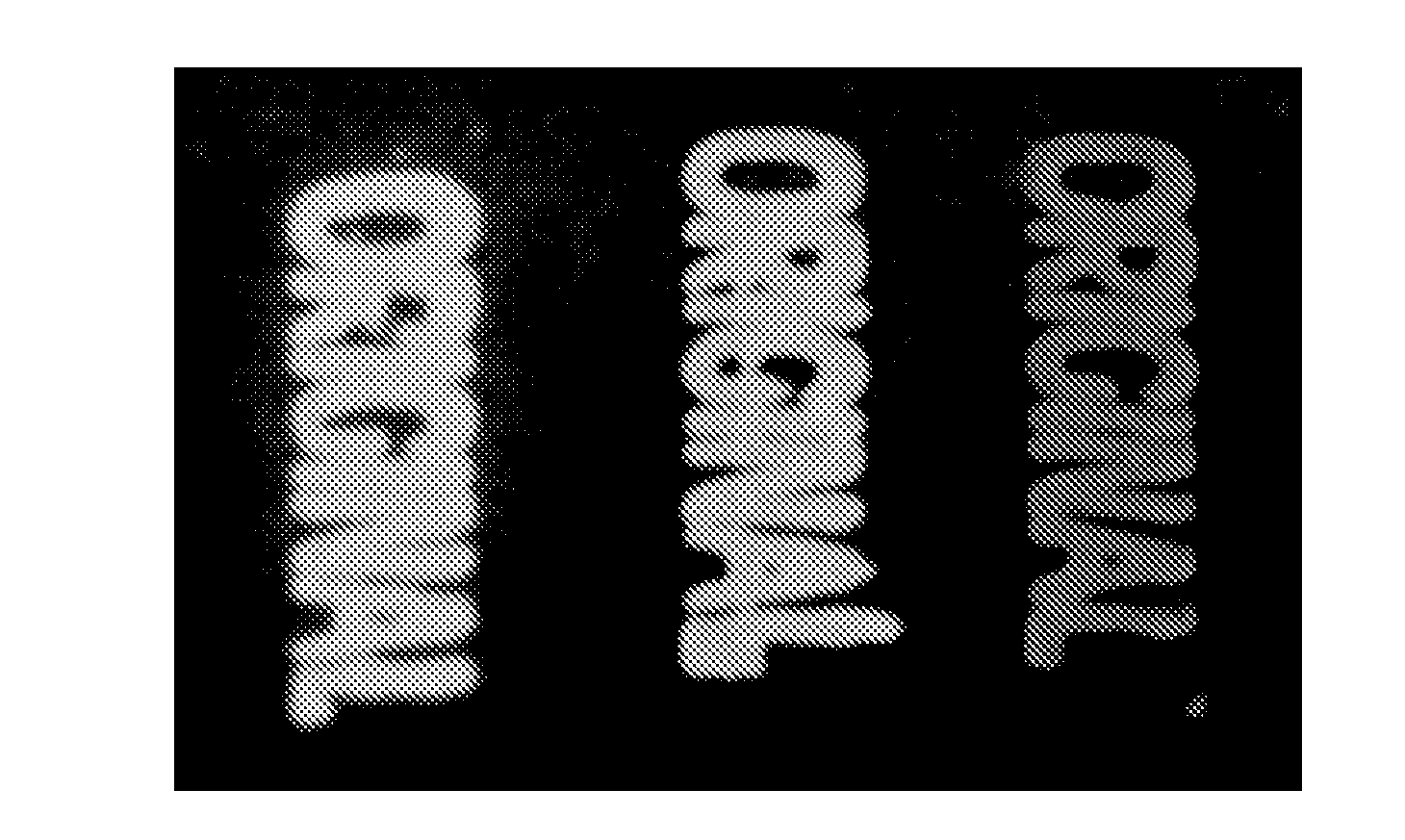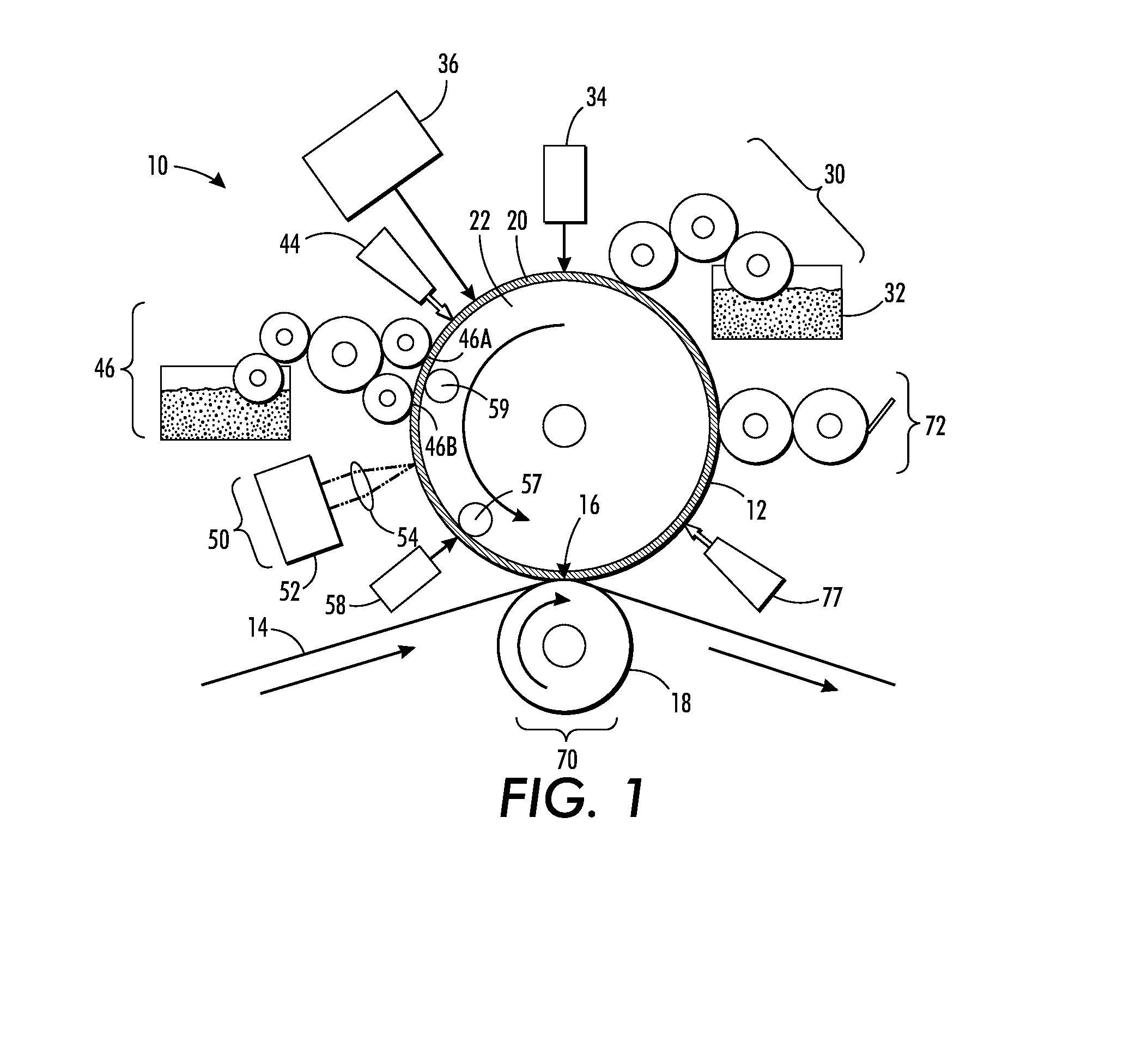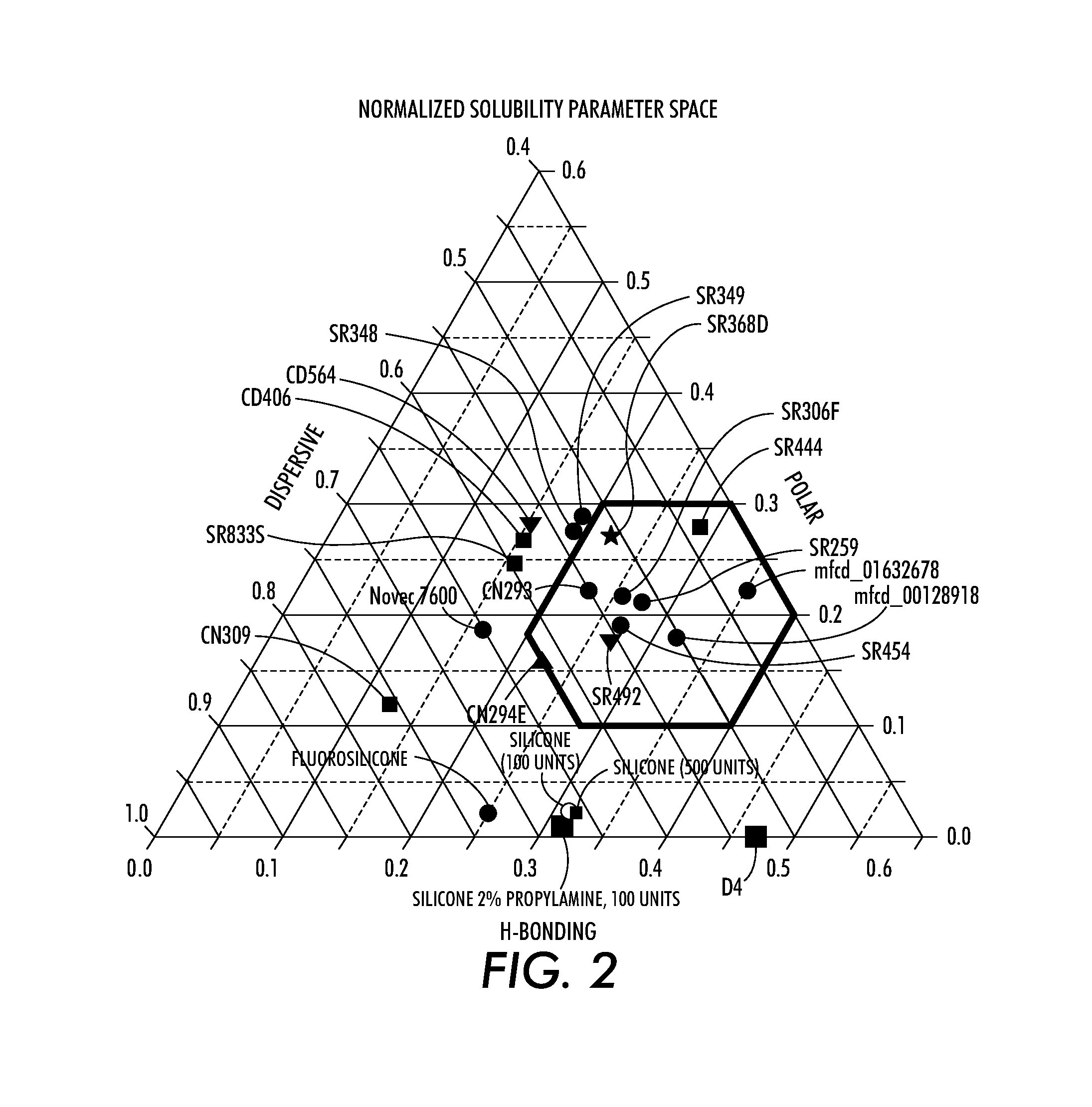Fluorescent security enabled ink for digital offset printing applications
a technology of digital offset printing and security enabled ink, which is applied in the direction of luminescent compositions, printing processes, inks, etc., can solve the problems of not being able to accommodate true high-speed variable data printing, not being able to create and print new patterns from one page to the next, and the cost of permanently patterned imaging plates or cylinders is amortized over the number of copies
- Summary
- Abstract
- Description
- Claims
- Application Information
AI Technical Summary
Benefits of technology
Problems solved by technology
Method used
Image
Examples
example 1
[0149]Initially, the Hildebrand solubility parameter approach was used to identify curable monomers and oligomers that were most likely to be compatible with the digital offset printing systems contemplated herein. Screening of suitable ink ingredients was also conducted by measuring the degree of mixability between the ink ingredient and the dampening fluid. NOVEC 7600 was used in the dampening fluid. Other screening criteria included curability, surface tension, viscosity, and safety.
[0150]Ninety-nine different monomers and oligomers (i.e. possible ink ingredients) were tested and ranked according to the following experimental procedure. Roughly equal amounts (0.5 to 1 mL each) of the monomer / oligomer and Novec™ 7600 were pipetted into a 4 mL vial. The vial was shaken vigorously by hand. Mixability was then visually measured on a scale of 0 to 3. 0 indicated that the materials were not mixable and exhibited rapid phase separation. 1 indicated that the materials exhibited slow phas...
example 2
[0158]A clear ink base was prepared by mixing the components shown in Table 4:
TABLE 4ComponentAmount (wt %)Sartomer CN3099.90Sartomer CN294E74.83Sartomer SR2599.43Ciba Irgacure 1843.30Ciba Irgacure 8192.35Ciba Irgastab UV100.19
[0159]Three colored fluorescent inks were then prepared using the clear ink base.
[0160]A blue fluorescent ink was prepared by adding 0.200 grams of DFSB-C0 (blue emitting fluorescent dye from Risk Reactor Corporation) to 10 grams of the clear ink base. The composition was heated at 70° C. and stirred at 300 rpm for 1 hour.
[0161]A green fluorescent ink was prepared by adding 0.200 grams of 2,2-hydroxyphenyl benzothiazole (green fluorescent dye available from Sigma-Aldrich) to 10 grams of the clear ink base. The composition was heated at 70° C. and stirred at 300 rpm for 1 hour.
[0162]A red fluorescent ink was prepared by adding 0.200 grams of DFKY-C7 (red fluorescent dye available from Risk Reactor). to 10 grams of the clear ink base. The composition was heated ...
first example
Blue Fluorescent Ink
[0172]The ink transfer test was then performed using the blue fluorescent ink. FIG. 9 shows the ink transfers after each pass (no fountain solution). The performance was similar to or better than that of the Comparative Example. Little ink was transferred on the third pass. After three passes, little to no residual ink remained on the plate surface.
[0173]Ink transfer in the presence of fountain solution is shown in FIG. 10 (D4). Again, the D4 fountain solution performed well: no ink was transferred onto the paper in the areas where the plate contained the fountain solution.
PUM
 Login to View More
Login to View More Abstract
Description
Claims
Application Information
 Login to View More
Login to View More - R&D
- Intellectual Property
- Life Sciences
- Materials
- Tech Scout
- Unparalleled Data Quality
- Higher Quality Content
- 60% Fewer Hallucinations
Browse by: Latest US Patents, China's latest patents, Technical Efficacy Thesaurus, Application Domain, Technology Topic, Popular Technical Reports.
© 2025 PatSnap. All rights reserved.Legal|Privacy policy|Modern Slavery Act Transparency Statement|Sitemap|About US| Contact US: help@patsnap.com



